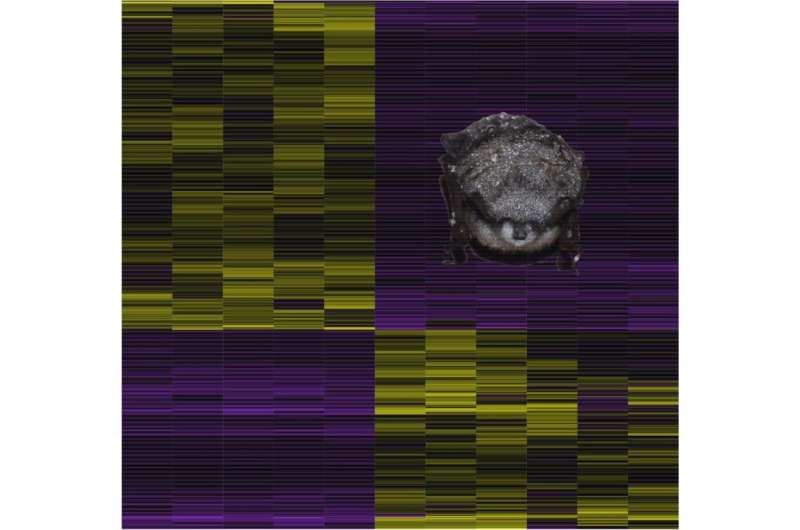Hibernating bats mount a partial immune response against white nose fungus

White-nose syndrome (WNS), an invasive skin infection caused by the Pseudogymnoascus destructans (Pd) fungus has killed millions of bats since it was first seen in North America in 2007. A analysis of gene expression in hibernating bats infected with the destructive fungus published on October 1st in PLOS Pathogens reveals how the resting animals' immune system fights the infection.
During hibernation when the conservation of energy is critical, certain parts of the immune system—at least in rodents where most studies have been done—are downregulated. The low body temperature and energy consumption protects hibernating mammals against many pathogens as they are adjusted to their hosts' regular body temperature. Because Pd grows at temperatures between 2 and 18 degrees C it overcomes this barrier.
Based on the rodent studies, Ken Field, from Bucknell University in Lewisburg, USA, and colleagues hypothesized that hibernating bats may keep Pd in check by relying on non-specific (or innate) immune responses and memory immune responses. If those animals are immune naïve—that is, if they have not encountered and survived the Pd pathogen before—they have no immune memory to fight back strongly and might therefore succumb to the disease.
To study the actual host response, including the immune response, to Pd in hibernating bats, the researchers did a detailed analysis of all the genes active in the wing tissues of six hibernating little brown bats infected with Pd—including active genes of the fungus itself—and compared this to the gene expression pattern of non-infected little brown bats hibernating in captivity without Pd exposure.
(They selected North American little brown bats because they are highly susceptible to Pd. Mortality rates from WNS vary by species, ranging from over 90% in colonies of little brown bats to little or no mortality in some North American species that—like bats in Europe where the fungus has long been present—survive even though their skin gets infected.)
The changes in gene expression the researchers observed suggest that the bats' host initial responses to fungal skin infection remain intact during hibernation and are similar to those seen during such infections at regular body temperature, including acute inflammation and wound healing. In contrast, the influx of white blood cells into infected tissue that normally follows the initial immune response appears to be missing, but it is unclear whether this is a consequence of hibernation or whether Pd is able to prevent recruitment of these immune cells.
Besides these immune-response-related patterns, the researchers also saw changes in genes involved in metabolism which might be related to the more frequent warming-up periods seen in bats with WNS that cause them to use up their energy stores more rapidly. Overall, there were considerable differences in gene expression (both pathogen and host genes) among the six Pd-infected bats, suggesting different individual host-pathogen interactions that could affect the course of the disease.
The researchers conclude that "hibernation does not prevent a host response to infection and a better understanding of the differences between host and pathogen responses in bats susceptible to WNS and those resistant may lead to ways for increasing survival". Specifically, they suggest that "bats could be protected from WNS if the missing responses could be established prior to hibernation or if treatments could block the virulence factors expressed by the Pd pathogen".
More information: Field KA, Johnson JS, Lilley TM, Reeder SM, Rogers EJ, Behr MJ, et al. (2015) The White-Nose Syndrome Transcriptome: Activation of Anti-fungal Host Responses in Wing Tissue of Hibernating Little Brown Myotis. PLoS Pathog 11(10): e1005168. DOI: 10.1371/journal.ppat.1005168
Journal information: PLoS Pathogens
Provided by Public Library of Science



















